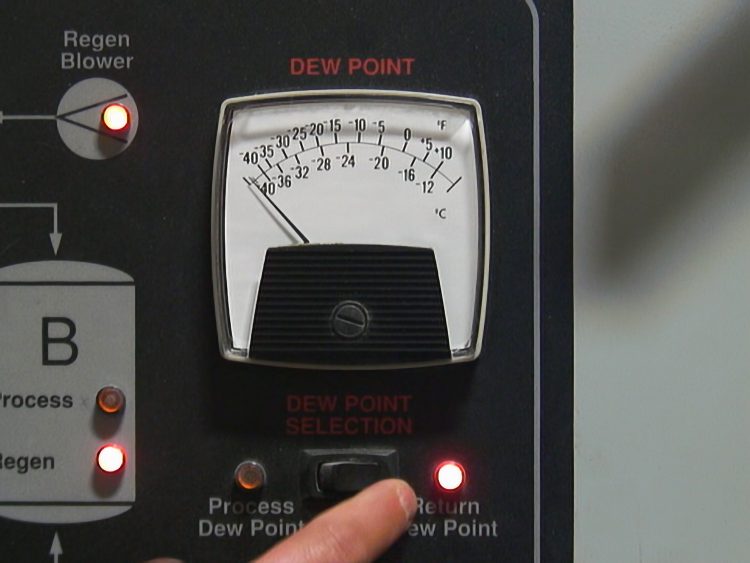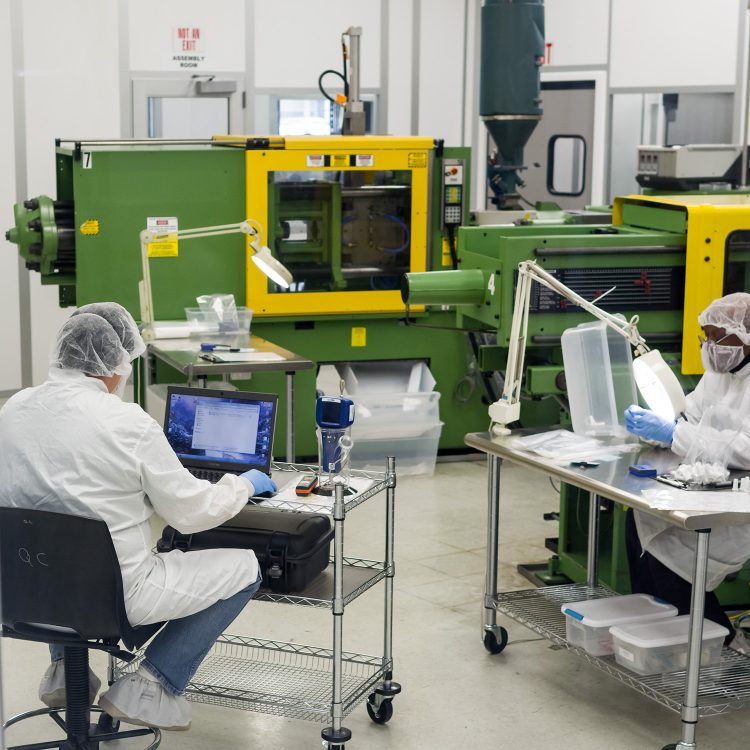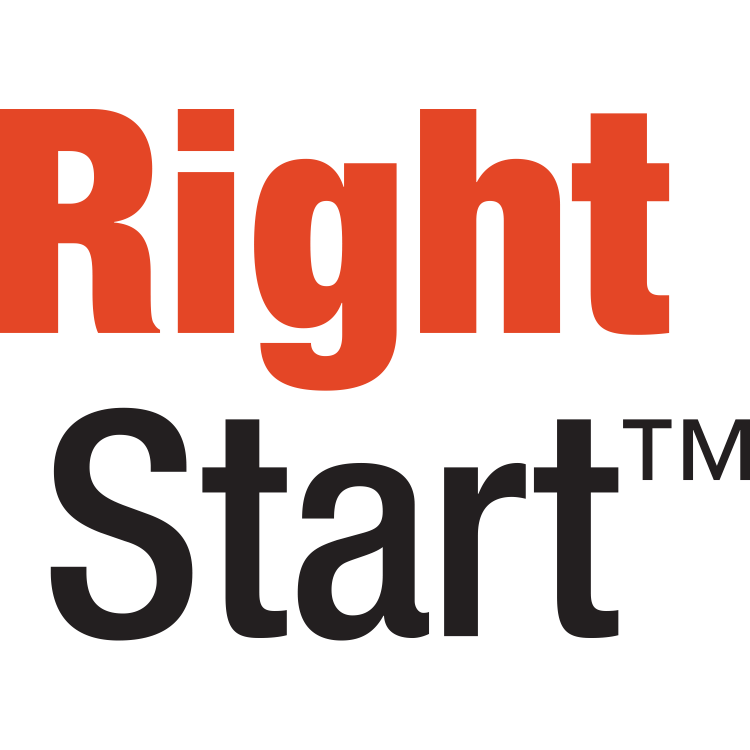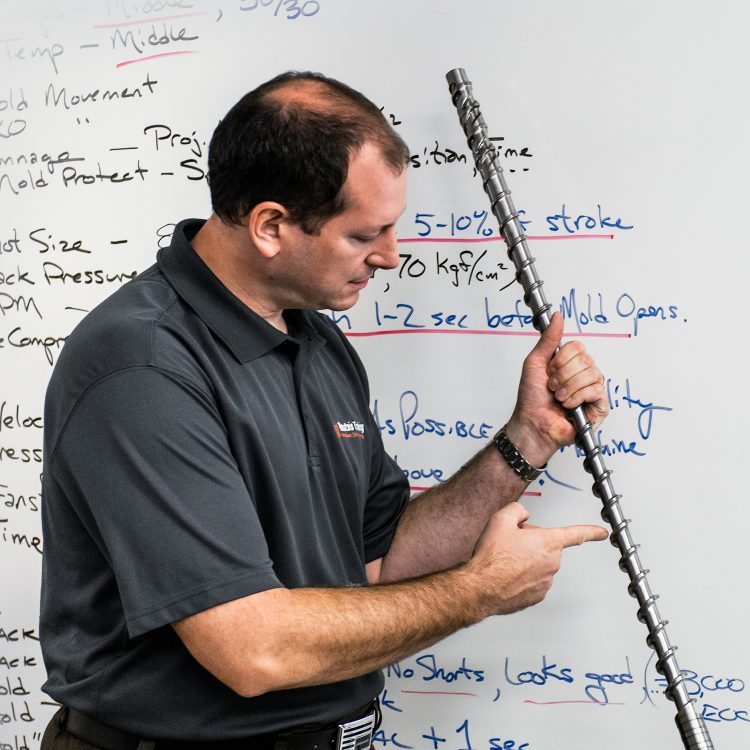Materials that need to be dried require a reliable supply of heated and dried air. The dryness of the air is measured using a dewpoint meter. In practice, there are several ways this can be accomplished. What is the best method? Which type of sensor is most accurate? In this post, we will answer some common questions about dewpoint measurement.
Onboard Dewpoint Sensors
Many desiccant dryers have the option of being purchased with an on-board dewpoint meter. We strongly recommend this option. Even though these onboard sensors are typically oxide-based — which means they can drift ±5° or even ±10° dewpoint. While not extremely accurate, an onboard dewpoint meter provides a quick and convenient indication of the relative dryness of the air.
One of the best uses for such onboard sensors to alert you to potential issues with the dryer. To accomplish this, set an alarm on the dryer to notify you when the desiccant or regeneration cycle is failing to keep the air dry. This works well as a real-time indicator of the dryer’s effectiveness, or lack thereof.
Dryers equipped with dewpoint meters are typically capable of being set to regenerate when the desiccant bed reaches a pre-determined setpoint. This allows much more accurate control over the dryness of the air — as well as ensuring the bed regenerates only when necessary, in order to maximize its longevity.
Without an onboard dewpoint meter, there is no fast method to check the performance of the dryer and desiccant beds. Keep in mind these onboard meters will still need to be verified 2 or 3 times a year to ensure they are functioning properly. This is accomplished with a portable dewpoint meter.
Portable Dewpoint Meters
Every processing facility that uses material dryers should have several portable dewpoint meters available for maintenance and materials handling personnel to use. Meters with polymer-based sensors are preferable, as these are much more accurate than oxide-based sensors. These units are typically suitcase-sized with on-board batteries so they can easily be used out on the floor.
By installing test ports in your dryers and hoppers, you can use portable meters to draw air samples and test the air being provided to the hopper, within the hopper, returning from the hopper, and at the feedthroat. These measurements can quickly tell you how well the dryer is performing.
Feedthroat dewpoint measurement can also ensure the material entering the barrel is fully dried and there are no leaks causing the material to pick up moisture. Portable dewpoint meters are a great way to field-check the dryer’s onboard dewpoint meter whenever its accuracy is in question.
Without dewpoint measurement methods, there is no way to ensure your equipment is functioning and drying the material properly.
For more information about moisture measurement and material drying, be sure to check out Routsis Training’s Material Drying Technology. This online training programs give personnel a better understanding of how different polymers are best dried and prepared for reliable processing — and demonstrate how proper plastics material handling is critical to developing a consistent process and delivering quality products to your customers.




